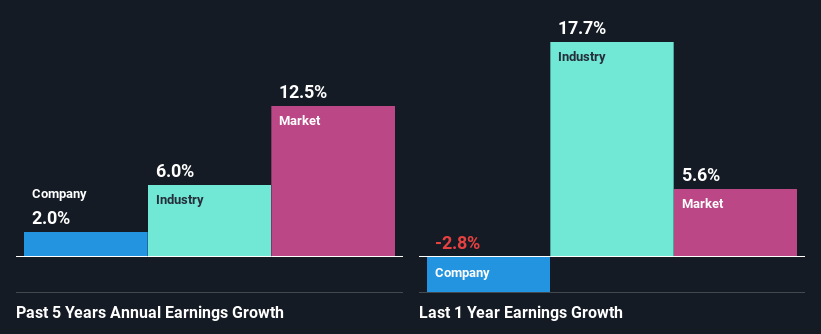Excelsior Capital Limited's (ASX:ECL) Financials Are Too Obscure To Link With Current Share Price Momentum: What's In Store For the Stock?
Excelsior Capital (ASX:ECL) has had a great run on the share market with its stock up by a significant 10% over the last month. However, we wonder if the company's inconsistent financials would have any adverse impact on the current share price momentum. In this article, we decided to focus on Excelsior Capital's ROE.
Return on Equity or ROE is a test of how effectively a company is growing its value and managing investors’ money. Put another way, it reveals the company's success at turning shareholder investments into profits.
Check out our latest analysis for Excelsior Capital
How To Calculate Return On Equity?
Return on equity can be calculated by using the formula:
Return on Equity = Net Profit (from continuing operations) ÷ Shareholders' Equity
So, based on the above formula, the ROE for Excelsior Capital is:
7.5% = AU$3.8m ÷ AU$51m (Based on the trailing twelve months to December 2020).
The 'return' is the profit over the last twelve months. So, this means that for every A$1 of its shareholder's investments, the company generates a profit of A$0.08.
What Has ROE Got To Do With Earnings Growth?
Thus far, we have learned that ROE measures how efficiently a company is generating its profits. We now need to evaluate how much profit the company reinvests or "retains" for future growth which then gives us an idea about the growth potential of the company. Generally speaking, other things being equal, firms with a high return on equity and profit retention, have a higher growth rate than firms that don’t share these attributes.
Excelsior Capital's Earnings Growth And 7.5% ROE
At first glance, Excelsior Capital's ROE doesn't look very promising. However, given that the company's ROE is similar to the average industry ROE of 8.4%, we may spare it some thought. Having said that, Excelsior Capital has shown a meagre net income growth of 2.0% over the past five years. Bear in mind, the company's ROE is not very high . So this could also be one of the reasons behind the company's low growth in earnings.
As a next step, we compared Excelsior Capital's net income growth with the industry and were disappointed to see that the company's growth is lower than the industry average growth of 17% in the same period.
Earnings growth is an important metric to consider when valuing a stock. What investors need to determine next is if the expected earnings growth, or the lack of it, is already built into the share price. This then helps them determine if the stock is placed for a bright or bleak future. One good indicator of expected earnings growth is the P/E ratio which determines the price the market is willing to pay for a stock based on its earnings prospects. So, you may want to check if Excelsior Capital is trading on a high P/E or a low P/E, relative to its industry.
Is Excelsior Capital Making Efficient Use Of Its Profits?
Despite having a moderate three-year median payout ratio of 42% (implying that the company retains the remaining 58% of its income), Excelsior Capital's earnings growth was quite low. So there could be some other explanation in that regard. For instance, the company's business may be deteriorating.
Moreover, Excelsior Capital has been paying dividends for eight years, which is a considerable amount of time, suggesting that management must have perceived that the shareholders prefer dividends over earnings growth.
Conclusion
Overall, we have mixed feelings about Excelsior Capital. Even though it appears to be retaining most of its profits, given the low ROE, investors may not be benefitting from all that reinvestment after all. The low earnings growth suggests our theory correct. Wrapping up, we would proceed with caution with this company and one way of doing that would be to look at the risk profile of the business. Our risks dashboard would have the 2 risks we have identified for Excelsior Capital.
This article by Simply Wall St is general in nature. It does not constitute a recommendation to buy or sell any stock, and does not take account of your objectives, or your financial situation. We aim to bring you long-term focused analysis driven by fundamental data. Note that our analysis may not factor in the latest price-sensitive company announcements or qualitative material. Simply Wall St has no position in any stocks mentioned.
Have feedback on this article? Concerned about the content? Get in touch with us directly. Alternatively, email editorial-team (at) simplywallst.com.

